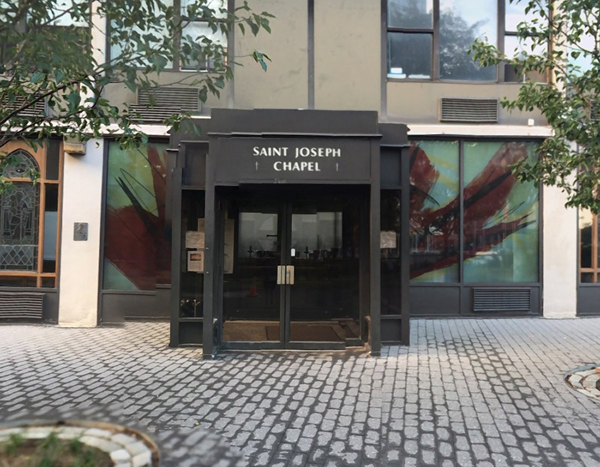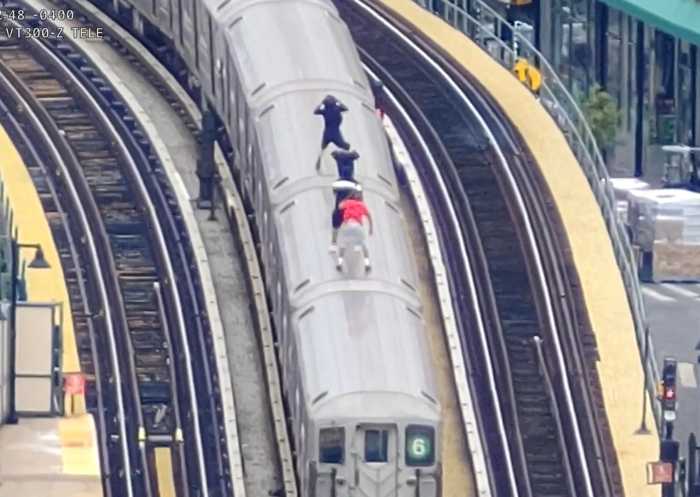
Battery Park City’s St. Joseph’s Chapel, which offered aid an comfort to first responders in the aftermath of the 9/11 attacks, could be forced out in the coming weeks unless the modest church can strike a deal to reduce its rent, which comes to more than a quarter of a million dollars annually.
BY COLIN MIXSON
A beloved Downtown chapel may have survived the 9/11 terrorist attacks only to be destroyed by New York City’s ruthless real estate market.
South End Avenue’s cherished St. Joseph’s Chapel in Battery Park City — which miraculously came through 9/11 unscathed and sheltered first responders fleeing the attack’s caustic fallout — may be forced to close its doors as soon as this summer, due its $263,000-a-year rent.
Its lost is an almost unbearable prospect for locals who lived through the devastating attack and relied on the chapel for spiritual comfort in the aftermath.
“People who came back after 9/11, part of what they held onto are the things that were part of their life before, when life was simple, and part of that was the chapel,” said St. Joseph’s parishioner Justine Cuccia. “Whether you’re catholic or not, it’s something that holds people together.”
A 1983 lease agreement signed between parish leaders and Gateway Management saw the chapel’s rent increase at a moderate two percent annually, and the parish paid an enviable annual rent of $85,000 when St. Joseph’s pastor Father Kevin Madigan negotiated a lease renewal in 2009, according to Cuccia.
However, Father Joseph Tyrell replaced Madigan in 2013, and that year hashed out a renewal deal with St. Joseph’s landlord that set the chapel’s rent at 90-percent market value, or a whopping $263,000 per year, Cuccia said.
Parishioners only found out about the boondoggle in 2015, after the city’s buildings department came down on the chapel for an outdated certificate of occupancy, which sparked a barrage of questions that ultimately shed light on St. Joseph’s out-of-control rent.
Parishioners have since scrambled to organize a new deal with Gateway — which is owned by the Lefrak, Fisher, and Olnick families — with help from the management company’s own quasi-governmental landlord, the Battery Park City Authority, which arranged meetings between the company and parish leaders. Though the Gov. Cuomo-appointed authority kept a light touch, so as to avoid questions about the separation of church and state.
“While the state has no role in the discussions between the church and its landlord, St. Joseph’s is an iconic part of the neighborhood, and we hope the parties can reach an agreement that allows the church to remain in its location,” according to BPCA spokesman Nick Sbordone.
Gateway had agreed to reduce St. Joseph’s annual rent by about 12 percent, to roughly $231,700, with company spokeswoman Brooke Shaughnessy saying, “Gateway has generously and unilaterally offered a significant reduction in rent to the Church.”
But St. Joseph’s current pastor, Father Jared Quinn, and the parish’s finance committee told parishioners that the bone Gateway had thrown the chapel was still too big to chew, and that the parish could only afford just over $56,000 a year — less than what it paid in 2009.
Even the chapel’s biggest supporters couldn’t hear the parish’s best offer without wincing, according Cuccia.
“That’s ridiculous,” she said. “It would be great if they’re lowballing to get the deal, but it’s not reasonable — that’s a big jump. They should go back to what they were paying before.”
St. Joseph’s Chapel, a satellite of St. Peter’s Catholic Church, was built in 1983 at the beginning of Batter Park City. At that time, it served just a handful of early pioneers before development took off, and its congregation swelled.
In the 9/11 attacks, the chapel suffered more damage from rescue efforts than from the attack, as the US government used the area as a staging ground and for months emergency workers sought refuge there, eating, drinking, and sleeping on the chapel’s floor.
Father Madigan would later undertake a rebuilding effort following the end of emergency work at the chapel, and erected within its walls the Catholic Memorial at Ground Zero, which people of all faiths have since been welcome to visit free of charge.
But it may not remain there much longer.
































